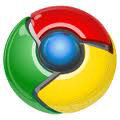13 tempat menyeramkan dan berhantu di Malaysia
Kalau berani jom buat lawatan 3 hari dua malam kt sana hehe...
1.HIGHLAND TOWER,KUALA LUMPUR
HIGHLAND TOWER,suatu masa dahulu merupakan sebuah
apartment mewah
yang didiami oleh pelbagai lapisan masyarakat.Satu tragedi runtuhan
telah meragut puluhan nyawa. Hanya segelintir saja mayat yg di jumpai.
Selebihnya masih terkubur di sana.
2.BANGLO MONA FANDEY
Banglo
yang pernah didiami oleh seorang artis tidak terkenal tanah air yang
juga merupakan seorang Bomoh. Beliau dan suaminya serta seorang
pembantunya telah terlibat dalam satu kes pembunuhan di
Temerloh,
Pahang yang telah menggemparkan dunia.
3.KEMAYAN CITY,JOHOR BAHRU
Sebuah
kompleks membeli belah yang terbengkalai sejak sekian lama.Adalah
dipercayai komplek tersebut telah menjadi tempat kediaman pelbagai
makhluk halus.
4.LEBUHRAYA KARAK
Kita
pernah digemparkan dengan cerita kehadiran sebuah kereta
Volkswagon
berwarna kuning tanpa pemandu yang sering menakutkan pengguna lebuhraya
ini.Kawasan terowong ini juga seringkali mengakibatkan kemalangan yang
meragut banyak nyawa.
5.VILLA NABILA,JOHOR BAHRU
Pada suatu masa dahulu, Johor Bahru di gemparkan dengan satu
kes pembunuhan di sebuah
villa. Sejak dari saat itu, banyak
penemuan-penemuan mistik telah terjadi di sekitar kawasan tersebut.
6.AMBER APARTMENT,GENTING HIGHLAND
Sebuah
apartment usang yang sering kali meninggalkan
mimpi ngeri
buat pengunjung di sana. Di sebalik kemeriahan dan keceriaan kota
keriangan tersebut, tersimpan beberapa kisah hitam mengenai tempat ini.
Beberapa pengunjung pernah melihat kelibat manusia membunuh diri dari
tingkap bangunan dan hilang apabila sampai ke tanah. Banyak lagi kisah
seram mengenai tempat ini.
7. SIMPANG T - GEORGETOWN,PULAU PINANG
Lebih dikenali sebagai
Junction The Deadly terletak bersebelahan dengan
Union High School.Mungkin kerana terlalu banyak
kemalangan misteri yang berlaku di kawasan ini terutama ketika memandu secara bersendirian pada waktu malam. Dikatakan juga terdapat
sebatang pokok kecil yang kelihatan seperti wanita membawa kanak-kanak. Kononnya ia terjadi apabila
seorang bomoh wanita menculik
anak kakaknya dan mereka tidak lagi pernah muncul di mana-mana kecuali di jalan ini.
8.INTISTUT ST MICHAEL, IPOH,PERAK
Pada zaman
perang dunia ke 2,
sekolah ini telah digunakan oleh tentera Jepun sebagai ibu pejabat
mereka. Pada ketika itu tentera Jepun sering menggunakan sekolah ini
untuk mejalankan aktiviti penyiksaan terhadap tawanan perang. Terdapat
juga banyak
terowong-terowong yang dibina oleh tentera Jepun
untuk tujuan penyiksaan dan penyimpanan makanan. Kawasan paling berhantu
di sekolah ini ialah di
gereja kecil yang terletak di sekolah ini, di mana sering kelihatan seorang
mubaligh kristian
berjubah hitam tanpa kepala duduk berdoa menghadap ke pintu pada waktu
pagi. Kebanyakan orang yang pernah melihat merahsiakan perkara ini.
9. MALAY COLLAGE KUALA KANGSAR (MCKK) , KUALA KANGSAR,PERAK
Seperti
Institusi St Michael, MCKK juga pernah dijadikan markas tentera pada
zaman pendudukan Jepun dahlu. Pelar-pelajar di sini sering melihat
kejadian-kejadian seperti sepasukan tentera Jepun sedang berkawad dan
juga mendengan bunyi rantai yang diheret sepanjang koridor.Terdapat juga
sebatang pokok yang berdekatan dengan lampu dimana pelajar sering
melihat bayangan seperti ada orang di gantung di pokok berkenaan.
(gambar lain illyz tak dapat jumpa,terpaksa illyz gunakan gambar yang
illyz dapat daripada google)
10. Victoria Intitution, Kuala Lumpur
Kawasan ini merupakan satu kawasan sekolah bagi kanak-kanak lelaki. Semasa
pendudukan Jepun, ramai askar-askar
British
disiksa dan dibunuh di sekolah ini terutama di ruang bawah tanah.
Banyak kejadian kerasukan di mana para pelajar akan berkelakuan pelik
dan ganas yang boleh mencederakan orang di sekelilingnya. Ini dikaitkan
dengan banyak roh yang berkeliaran dikawasan tersebut.
11. Bukit Tunku, Kuala Lumpur
Satu kawasan yang menyeramkan walaupun ia merupakan
kawasan perumahan paling elit
di KL. Cerita misteri kawasan ini bermula apabila terdapat seorang
pemuda meninggal dunia akibat kemalangan ketika sedang menunggang
motosikal dengan laju di satu selekoh tajam.Terdapat juga vesi lain
dalam cerita ini iaitu pemuda tersebut ghaib ketika menunggang motosikal
dalam kawasan gelap. Mungkin sebab terdapat banyak pokok besar di
kawasan ini yang menyebabkan timbul perasaan seram walaupun pada waktu
siang. ( maaf,sebab tak dapat cari gambar penuh bukit tunku )
12. Rumah ADO Menumbok, Sabah
[TIDAK ADA GAMBAR]
Kawasan
rumah ini dikatakan paling berhantu kerana tidak pernah ada satu orang
pun ADO yang tinggal lebih dari seminggu dalam rumah
tersebut.Sehinggakan rumah tersebut terbiar begitu sahaja.Bermacam-macam
gangguan berlaku di rumah tersebut seperti penghuni di pindahkan ketika
tidur selain bunyi yang menyeramkan.( illyz minta maaf,sebab dah cari
tapi masih tak jumpa )
13. Penjara Pudu
Tidak
dapat disangkal lagi bahawa kawasan penjara pudu merupakan kawasan yang
paling keras dan berhantu di Malaysia. Ini dibuktikan lagi bila hampir
semua akhbar pernah melaporkan mengenai kejadian paranormal yang berlaku
di kawasan Penjara Pudu. Kejadian-kejadian seperti gangguan lembaga
hitam, wanita cantik yang berdiri di tengah lorong penjara dan
macam-macam lagi gangguan bukan sahaja mengganggu banduan malah juga
turut mengganggu pegawai penjara yang bertugas. Namun kini penjara yang
pernah menempatkan penjenayah tegar seperti Botak Chin, Batang Kali dan
lain-lain telah di robohkan untuk tujuan pembangunan.


















